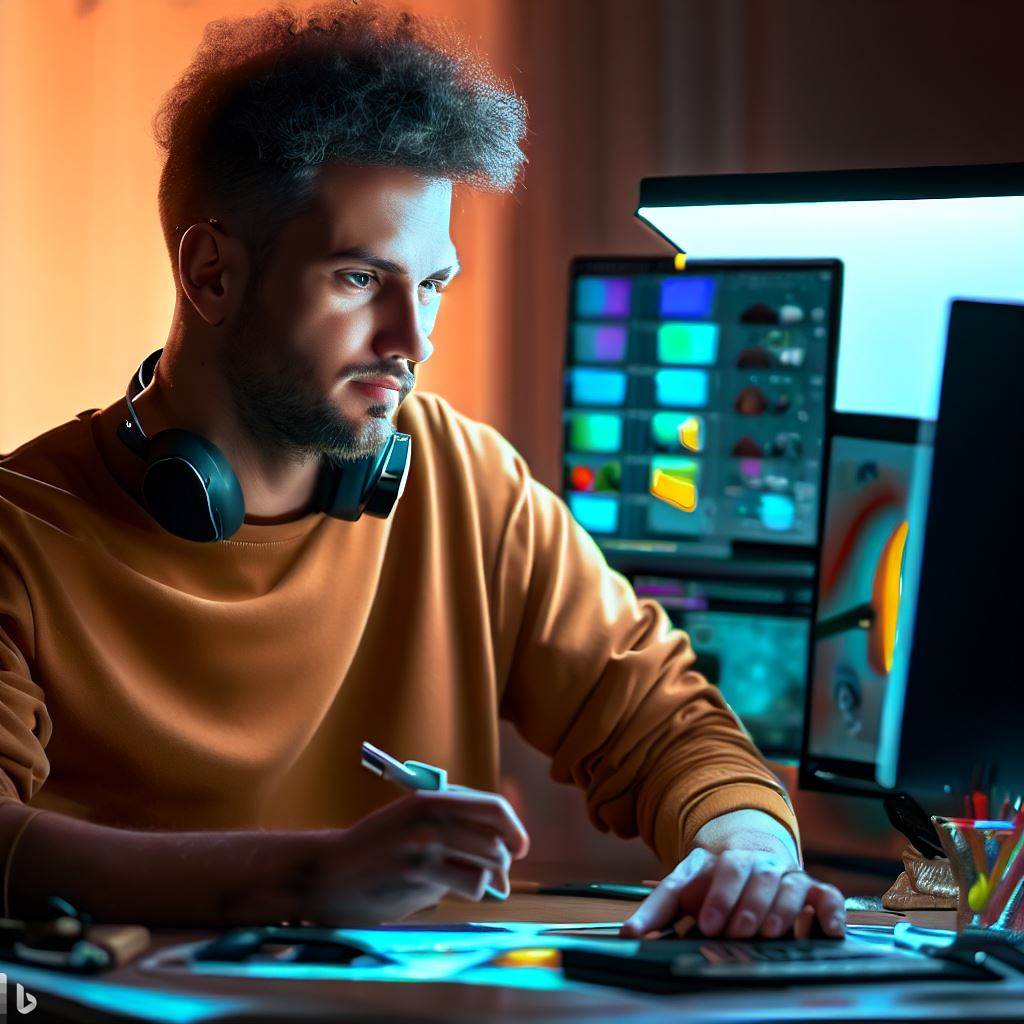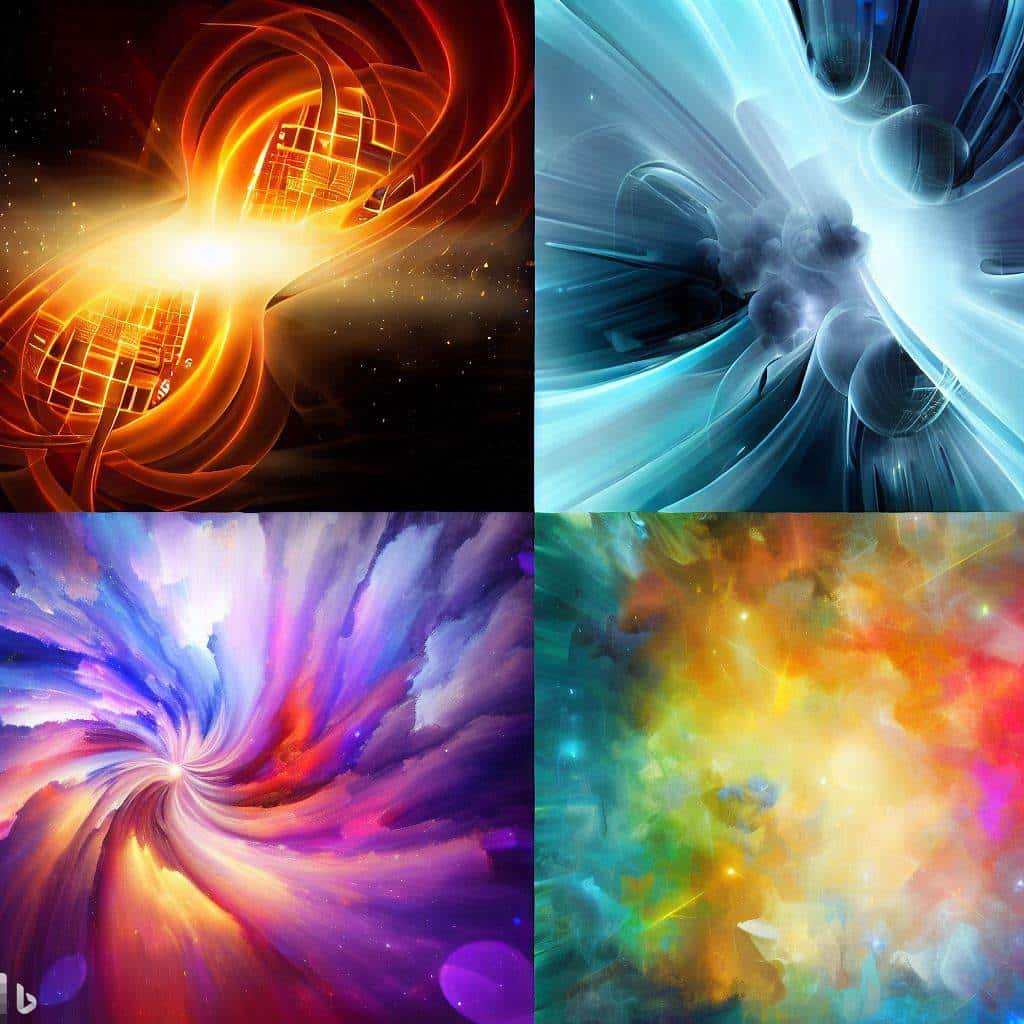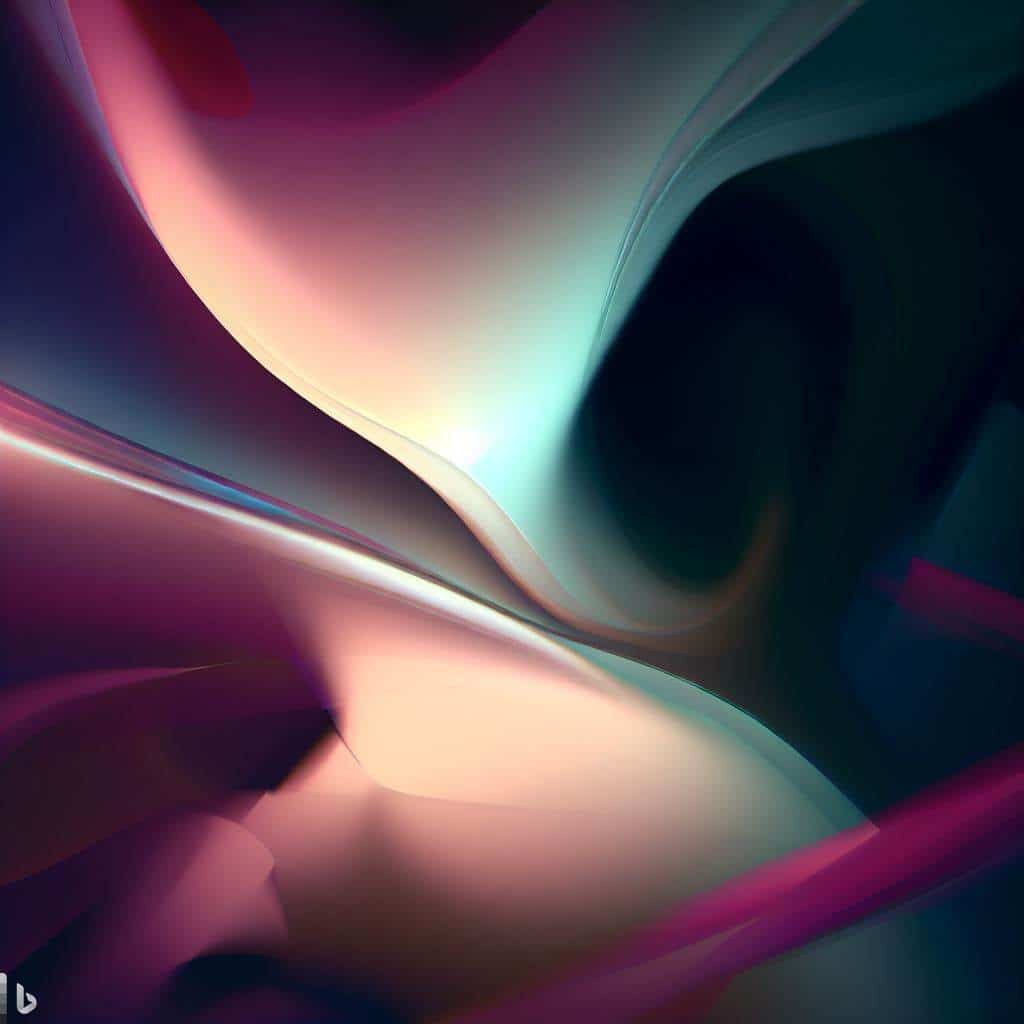Introduction
There’s a plethora of digital art software available today. Adobe Photoshop is undoubtedly one of the most popular choices for creating digital art, specifically for its versatility and myriad features. Apart from Photoshop, other software options include Corel Painter (known for its realistic brush strokes), ArtRage (great for natural-looking paintings), Procreate (ideal for mobile devices), Krita, Sketchbook Pro and Clip Studio Paint amongst others. These tools offer a range of functionality to suit different art styles and preferences.
It’s worth noting that hardware also plays an essential role in the creation of digital art. A good graphics tablet makes a massive difference in accuracy when working with brushes and allows more natural hand movements. Storage space must also be considered since high-resolution artwork requires a lot of storage space. Choosing the right tool takes experimentation, but building familiarity with your chosen software is crucial.
The flexibility of digital art software means anyone with access to them can create astonishing pieces, whether they’re beginners or seasoned professionals. Despite the abundance of available choices, there isn’t one size fits all application. Choose a tool that best suits your artistic endeavours to create unique works of art that stand out while exploring different styles and techniques.
Don’t miss out on the opportunity to take your artwork to the next level by diversifying you skillset with knowledge in multiple softwares potentiality gives you more creative freedom and opportunities to grow as an artist.
Unleash your inner artist with these tried and tested digital art tools – no paintbrush required.
Popular software used for digital art
To find the best software for your digital art needs, explore the popular software used by professional artists. Adobe Photoshop, Corel Painter, Procreate, Clip Studio Paint, Autodesk SketchBook, Affinity Designer, Krita, Adobe Illustrator, and Blender are all great options with unique features that cater to different art styles.
Adobe Photoshop
Graphic Design Software by Adobe is considered one of the most prevalent software for digital art. It has been popularised in the industry due to its intuitive interface and perfect blend of art tools like brushes, layers, filters and plug-ins.
A table showcasing Adobe Photoshop’s features:
| Features | Description |
|---|---|
| Tools | A wide range of art tools like brushes, pencils and pen as well as layer management |
| Plug-ins | Customisation can be done with thousands of third-party plug-ins |
| Filters | Professional filters for image retouching and enhancing |
Adobe Photoshop is known for its unique features like content-aware fill, pattern stamping and path cropping. These features enable artists to be creative in their artwork while saving precious time.
Adobe Photoshop was first released by Adobe systems in 1988 on Mac OS X. It became an instant sensation as it brought a paradigm shift from traditional film-based photoshopping to digital photo editing. Since then, it has grown into a comprehensive suite of software utilized across several industries such as graphic design, photography, web design and many more.
Corel Painter: Where mediocre artists go to pretend they’re Van Gogh.
Corel Painter
This widely used software is a digital art application packed with advanced features for creating stunning illustrations and paintings. It offers a vast array of brushes, pens, and paper textures to simulate traditional painting techniques. You can also customize existing tools or create your own brushes, making it highly versatile. Additionally, Corel Painter supports various file formats, including PSD files for Photoshop users.
A unique feature of Corel Painter is the ability to use layers effectively while working on fine details in an artwork. The software allows artists to set up different types of layers such as image layers, adjustment layers and effect layers to work seamlessly in a non-destructive manner.
Corel Painter’s comprehensive color management system makes it easy for artists to choose and organize colors in their palette while giving them full control over saturation, contrast and brightness settings.
If you are an artist looking for powerful creative options or exploring digital art medium as a beginner; Corel Painter should be considered on top of your list. With this software, you can unlock your full potential of creativity by experimenting with new painting techniques.
Don’t miss out on the opportunity to enhance your artistic abilities with this revolutionary software!
Procreate: the app that turns your iPad into an art studio and your bank account into a barren wasteland.
Procreate
For digital artists, Procreate is an essential tool. It’s a high-quality digital drawing app that has all the tools needed for illustration and painting. Its user-friendly interface makes it easy to use even for beginners.
The following table describes the features offered by Procreate:
| Features | Description |
| Brushes | Offers over 130 customizable brushes that can be used with various textured media like pencils, inks and paints. |
| Layers | Allows up to 160 layers in one document that can be organized in groups or folders. |
| Animation Assist | This feature helps create beautiful frame-by-frame animations without complex timelines. |
Besides its basic functions, Procreate lets users import just about any type of file format, such as Adobe Photoshop-compatible PSD files, PNGs, JPEGs and more. It also supports cloud storage so users can easily export their work to desktop applications.
For those using Procreate as a primary tool for designing, it’s important to connect with a community of other users. This will help to improve skills by getting feedback and sharing different techniques with others.
To get the most out of this software, remember these steps:
- First, learn how to use the core functionalities;
- Second, explore external resources available online such as tutorials;
- Thirdly join the creative community either on social media or forums.
By following these tips, users are sure to create amazing digital art with ease in no time!
Clip Studio Paint: Where even those with no artistic talent can create a masterpiece… or at least make a really cool stick figure.
Clip Studio Paint
Upon exploring the world of digital art, one might encounter a widely popular software that goes by the name of Clip Studio Paint. It provides numerous tools and features for digital drawing and painting, with its focus on manga and comic creation.
To understand this software in-depth, let’s look at a table that sheds light on some significant aspects:
| Features | Details |
|---|---|
| Price | $50-$219 |
| Platforms | Windows, macOS, iPadOS |
| Compatibility | Supports various file formats including PSD |
| Tools | Over 10 brushes along with pen pressure sensitivity adjustment |
| Interface | Customizable UI with over 8 different languages |
It’s worth noting that Clip Studio Paint was formerly known as “Manga Studio”. With extensive toolsets specifically designed for manga and comic creation, it also caters to other digital art forms like illustrations, character designs and more.
For those seeking to enhance their digital art skills using this software, here are some tips:
- Take advantage of its layering functionality to organize your work better.
- Learn the various brush types available within the software.
- Lastly, use its animation capabilities to create compelling motion graphics for your creations.
Autodesk SketchBook: Where your digital canvas comes alive and your real-life walls stay blank.
Autodesk SketchBook
This software is a digital art tool that has gained popularity among artists due to its flexibility and ease of use. It offers a wide range of brushes, textures, and tools for creating digital illustrations, paintings, and sketches. This program also supports layers and enables users to work with different file formats, making it easier to integrate the artwork into other projects.
One significant feature of this software is its ability to customize brushes and create unique tools according to the artist’s needs. With Autodesk SketchBook, artists can adjust the settings of existing brushes or create new ones from scratch. Additionally, it provides an intuitive interface that simplifies navigation through the various options.
It’s worth mentioning that Autodesk SketchBook was initially designed for use on mobile devices before having desktop versions released later. The company created it as an affordable alternative to other expensive digital art programs available in the market.
In addition to these features, Autodesk SketchBook offers cloud services that enable artists to store their work online and access it from any device at any time.
Overall, Autodesk SketchBook is a remarkable software tool used extensively by professionals in the digital arts industry for illustrating, painting, and sketching purposes. It continues to be updated regularly with additional features making it easier for artists’ convenience.
Affinity Designer: Where digital art becomes reality and your bank account becomes empty.
Affinity Designer
Creative Design Tool – Affinity Designer offers a wide range of features, helping users to create vector illustrations and designs with cutting-edge precision and speed.
| Features | Benefits |
|---|---|
| Vectors Graphics Editing | Effortlessly manipulate and edit vector shapes and lines at an incredible speed. |
| Precision Tools | Offers efficient alignment shots, snap-to-grid technology, instant colour editing & more for creating artistry graphics. |
| Artistic Text Styles | Create eye-catching typography with fine detail using advanced text style settings & effects. |
With built-in support for CMYK, Affinity Designer lets professionals work on their projects from start to finish without any limitations.
Using this intuitive software can give you unlimited scope in design creation. Get started with Affinity Designer today!
Krita: Where your artistic visions come to life, or at least until your computer crashes.
Krita
This software is a popular tool for digital art. It provides diverse features such as layered painting, vector drawing and image manipulation. Artists use it to create engaging illustrations, animations or comics with ease.
It is an open-source program, hence it’s free of cost. It lets graphic designers work in different environments, from professional to amateur levels. Moreover, its brush engines allow artists to customize their brushes for various shapes and textures providing greater control over the artwork.
There are several other applications that assist digital art creation techniques that stand out from the rest. For instance, one software allows animators to organize their animation frames enabling sequential motion effects through time-based animations.
Pro Tip: Shortcut keys help improve your productivity as they allow you to easily access frequently used tools while operating on digital art tools.
Adobe Illustrator: Because sometimes even a bad drawing can look sophisticated with the right font.
Adobe Illustrator
Para 1 – A widely popular software tool utilized for digital graphics and illustrations is the industry standard for vector-based artwork creation.
Para 2 –
| Adobe Illustrator |
|---|
| Used for creating vector designs |
| Supports multiple formats |
| Provides a wide range of tools |
Para 3 – One of the notable features of this software is its seamless integration with other Adobe products like Photoshop and InDesign, making it an essential tool in the graphic design industry.
Para 4 – Recently, a renowned graphic designer shared how Adobe Illustrator allowed them to create complex designs with ease, making their work more efficient and effective. It has undoubtedly revolutionized the field of digital artistry.
Blender: Where art meets functionality, and your confusion turns into a work of art.
Blender
The following table demonstrates the features of Blender:
| Features | Description |
|---|---|
| Modeling | High-poly sculpting, retopology tools |
| Animation | Rigging, keyframe animation, camera and motion tracking |
| Simulation | Particles, physics-based fluid simulation |
| Rendering | 3D engine with unmatched photorealism |
| Video Editing | Adjust cuts and transitions while adding sound |
Apart from these features, Blender also provides an extensive library of add-ons developed by its community. These add-ons can further enhance functionality within the platform.
A notable instance occurred when the film “Next Gen,” produced almost completely on Blender, bagged an Emmy Award in the Outstanding Animated Program category in 2019. This incident confirmed Blender’s capability to compete with commercial-grade software like Autodesk Maya and Cinema 4D.
Choosing digital art software is like picking a partner – you want one that compliments your style and doesn’t crash halfway through.
Factors to consider when choosing digital art software
To choose the right digital art software that suits your needs, you need to consider your budget, purpose, compatibility with hardware and operating system, user interface, and features. These factors will help you identify the best software for your specific digital art needs.
Budget
When deciding on digital art software, financial factors must be taken into account. The cost of the program should align with your financial limitations and goals, although it’s important not to skimp on quality for budgeting reasons. With various options that range in price and features, weighing out the benefits of each will determine which program is right for you.
Consider purchasing software with a monthly or yearly subscription if long term commitment seems unreasonable. Many firms offer free trials to test out different programs before signing up. Additionally, select software based on how often you plan to use it and what projects would require its use.
Lastly, one must consider any additional costs associated with digital art creation such as drawing tablets or styluses. Research prices and capabilities of different ones available to determine what will suit best.
It has been noted that over half of artists prioritize affordability when choosing new programs (Source: QuickBooks).
Digital art software: because even Picasso needed a little help sometimes.
Purpose
When selecting digital art software, it is crucial to consider the intended use of the software. Determine whether the program is for personal or professional use, and assess if it caters to your skill level.
Take into consideration the type of digital artwork you plan to create. Different software has features that are best suited to specific types of art styles and techniques. Look for a program that can offer you the capabilities you need.
Also look into the system requirements for each program. Evaluate whether your equipment can handle running it without lagging or crashing.
As a recommendation, research tutorials and reviews by other users to help guide you in making an informed decision. Additionally, some software offers free trials; take advantage of this and test out various programs before making a final decision on which one to invest in.
Make sure your digital art software is compatible with your hardware and operating system, or else you’ll be painting a masterpiece with a potato.
Compatibility with hardware and operating system
Choosing digital art software requires considering its compatibility with the user’s hardware and operating system. Inadequate compatibility can lead to a frustrating experience.
Compatibility with hardware and operating system:
| Software | Operating System | Hardware Requirements |
|---|---|---|
| Adobe Photoshop | MacOS & Windows | Intel Core 2 processor, 2GB RAM, 2GB hard disk space |
| Procreate | iPadOS only | iPad (any model), Apple Pencil (1st or 2nd generation) |
| Krita | MacOS, Windows & Linux | Dual-core processor, 4GB RAM, OpenGL graphics |
Different software has various requirements that users should consider before purchasing or downloading. For example, Adobe Photoshop is compatible with both MacOS and Windows but only runs on an Intel Core 2 processor machine. Meanwhile, Procreate exists solely on the iPadOS platform and requires an Apple Pencil for drawing.
Software developers often update their programs to maintain compatibility with new operating systems and hardware specifications. However, ensure to research if the digital art software is updated regularly before selecting it.
One example of how compatibility concerns have impacted art creation is Munsell color system inventor Albert H. Munsell’s struggles to find sketches’ color accuracy in his early book productions in the late-19th century. Without modern image editing tools’ compatibility, sketch-to-print color fidelity suffered, causing public outrage at misrepresented colors in Munsell’s books’ illustrations.
Choosing digital art software is like picking a life partner – you want a great user interface and all the right features to make creating a masterpiece as smooth as possible.
User interface and features
The visual and functional aspects of digital art software are crucial to consider for artists creating digital masterpieces. Here are some key points to consider when evaluating user interface and features:
- Compatibility with different operating systems
- Workflow customization
- Variety of brush options and customization capabilities
- Layer management tools
- Integration with other programs such as 3D modeling software
Additionally, the overall ease of use and intuitiveness of the software can greatly impact an artist’s experience. It is important to consider how quickly one can learn the tools, how efficient one can navigate through them, and whether specific tasks can be easily performed without unnecessary complexities.
One overlooked but important consideration is the speed at which strokes are rendered on the canvas. Sluggish performance can lead to frustration or impede productivity.
In a study conducted by TechRadar, they found that Adobe Photoshop continues to dominate the digital art software market due to its wide range of customizable brushes and extensive integration capabilities.
As an artist evaluates their potential digital art software options, carefully analyzing user interface and features can help them select a tool that will best support their creative vision. Choosing the right digital art software is important, but remember, even the best tools won’t turn a terrible artist into a masterpiece.
Conclusion
Various software are used for digital art, each with unique features and capabilities. Examples of popular software for digital art include Adobe Photoshop, Procreate, Corel Painter, Clip Studio Paint, Krita, and Sketchbook Pro. These programs offer a range of tools such as brushes, layers, effects, filters and color palettes to create dynamic and visually appealing artwork.
Moreover, the choice of software depends on the artist’s preference and the type of project they are working on. For instance, graphic design professionals may use Adobe Illustrator or Inkscape for creating vector graphics.
In addition to this, advanced 3D modeling software like Maya or Blender is used by 3D artists to create complex images or animations.
To conclude, choosing the right software is crucial in digital art creation process. One must weigh their options carefully while factoring in their budget and preferences to select a suitable program that can enhance their creative abilities.
FAQ – What software is commonly used for digital art?
1. What is digital art and who are digital artists?
Digital art is a form of artistic expression that uses digital technology to create artwork. Digital artists are artists who create this type of art using computers and other digital tools.
2. What software is commonly used by digital artists?
The most common software for digital artists include:
- Adobe Photoshop: One of the most popular and widely used digital art programs. It has a wide range of tools and features for digital painting, image editing, and graphic design.
- Krita: A free and open-source digital painting software that is popular among digital artists.
- Clip Studio Paint Pro: A versatile drawing tool that is ideal for comics, manga, and animation.
- Illustrator: A vector-based program that is widely used for graphic design and illustration.
- Procreate: An iOS-exclusive app that is popular among digital artists for its customizable interface and advanced features.
3. Will digital artists still be using the same software in 2023?
It is hard to predict which specific software will be popular among digital artists in 2023, as technology is constantly evolving. However, it is likely that some of the most commonly used software, such as Adobe Photoshop, will still be popular among digital artists.
4. What are some of the best free digital art programs for beginners?
Some of the best free digital art software for beginners include:
- Krita: As mentioned earlier, Krita is a free and open-source digital painting software that is easy to use and has a user-friendly interface
- GIMP: A free and open-source image editing program that is similar to Photoshop.
- Inkscape: A vector-based graphic design program that is great for creating logos, icons, and illustrations.
5. Can digital art be created on an Android or iPad tablet?
Yes, bith are used to create digital art.





